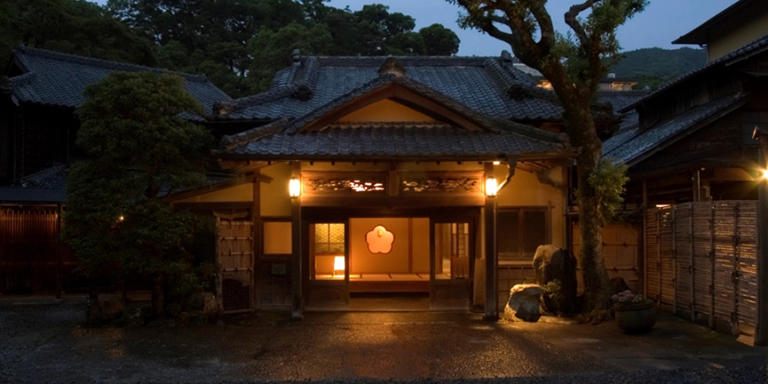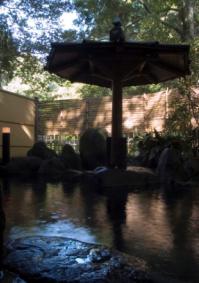
Staying at a luxurious ryokan, a traditional Japanese style hotel or inn, can be one of the highlights of your travel. Combinations of architecture, surroundings, interior, spa and cuisines can make your stay truly a lifetime memory.
Ryokan has its own way of providing customers with services, which may seem rather strange to guests from foreign countries. Here is a brief description on the servicing system of ryokan, together with tips on its usage.
For our recomended accommodations, please see https://www.michitravel.com/accommodation
Language
Language is one of the concerns that foreign travelers have when visiting a ryokan. It is true that most room attendants or staffs at the front desk do not speak English. However, our guests commented that language was not a big obstacle in enjoying unique cultural experiences. As long as ryokan staffs have genuine hospitality and guests also have basic understandings on Japanese custom in ryokan, there should not be a problem. Instead, the difficulties in communication might arise in the reservation process, such as getting additional information of the ryokan to make sure your choice is the best, or conveying your preferences to the ryokan beforehand. (Of course, we can help you with the complex part if you contact us.)
Check-in time
Check-in time at a ryokan is not as flexible as a hotel. Ryokan staffs need to prepare full-course dinner beforehand, usually consisting of more than 10 dishes, so that guests can enjoy the meal at a best and fresh condition. For a general manager or proprietress of a small ryokan, though they want to be customer-oriented, it is difficult to keep their cooking staff and room attendants waiting for a late-coming guest. If you are not sure of the time you are arriving (e.g. the first night of your arrival from overseas), we recommend staying in a large hotel (i.e. not having to worry about dinner time). If you are late in your schedule and cannot arrive before dinner time (usually after 6 o'clock), call the ryokan. Cut-off time for dinner differs depending on the ryokan.
Take off your shoes
Just like entering a Japanese home, guests are requested to take off their shoes, instead putting on slippers at the entrance of the ryokan.
Check in
When you arrive at the ryokan, you will first check in. A room attendant will lead you to your room and serve you with green tea or will bring the tea later on.
Service Charge (Tip)
At a ryokan, service charge is normally included in the bill. It is unnecessary to offer a tip for any service.
Wear a Yukata (cotton kimono)
Yukata (a cotton kimono) is usually available in your room. You may wear them for taking a bath, for relaxation in your room, and for sleeping as well. The yukata is only lent temporarily during your stay in the ryokan.
Bathe at the Onsen (hot spring)
Generally, ryokan has large baths partitioned into two sections, one for women and another for men.
When you enter your section, there is a large changing room. There are either big baskets or lockers to place your removed clothes in. You may not wear your underwear or swimming suits into the bath.
When you go into the bath area, here are the steps to take.
- Wash your body with a soap and rince thoroughly before getting into the bathtub, since the hot water in the bathtub is shared among many people. Please do not get in to the bath with your soapy body.
- Immerse yourselves in the bathtub to warm your body and relax.
- Wipe your body with a small towel before entering the changing room.
Onsen bath tax
Generally, a bath tax is levied on a one night stay per person at a ryokan with hot springs. This tax is to be paid by all the guests, even if he or she does not take a bath during the stay.
Chartered family bath
There are ryokans that have baths for private use. Some ryokans require reservations for the use of chartered family baths. For those not requiring reservations, just go to the bath and see if a plate says "unoccupied" or the door is unlocked.
Meals served in your own room
Some ryokans serve your meals in your own room. A room attendant will prepare the room for dining and then bring your meal. The dinner dishes usually come one at a time (like course meals), and have a large volume in total, so be sure not to have a snack right before dinner or you will not be able to enjoy all the dishes. In some ryokans, the Okami (proprietress) will come to your room for a greeting. Enjoy the conversation and ask her questions if you have any.
Charges
Usually, charges at a ryokan include breakfast and dinner. Please note that a ryokan will not charge for the room, but for accommodation fee per person. That is, a ryokan bill indicates the charges for a one-night stay with breakfast and dinner per person. Usually, breakfast and dinner are a must for guests. However, different ryokans have different policies; some ryokans accept "room and breakfast" if you stay two consecutive nights. Please check with us if you have some preferences about staying options.
How to Find a Ryokan that Best Fits You
Different ryokans have different appeals. Since we have actually visited and inspected all of our recommended ryokans, we can let you know our insiders' advice depending on your needs.
a) If you like to do your research on your own, you can check our website which includes key information for foreigners such as private bath, access, price range, activities around the ryokan. You can submit an application with needed information through an online application form. We will try our best to book what you are looking for.
b) Or you can just contact us describing your rough idea of your travel and your preferences/constraints. We know, for most busy people, it is time-consuming to check dozens of properties through multiple websites and compare each to find out your best one. Instead, simply contact someone who will give advices in your shoes.


